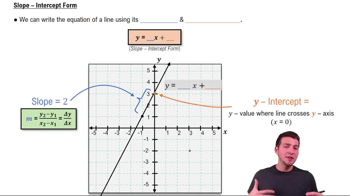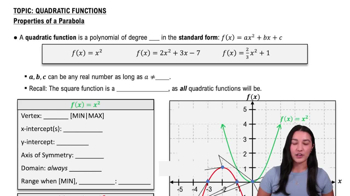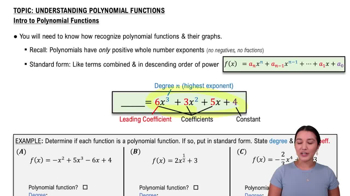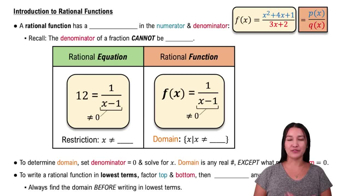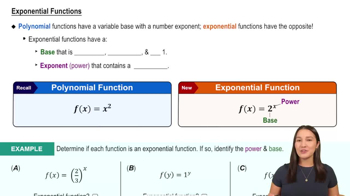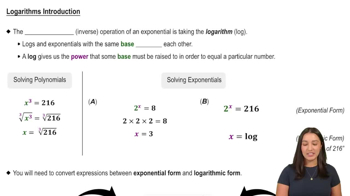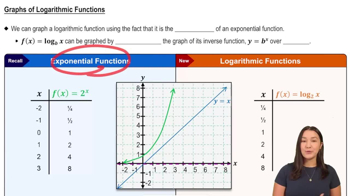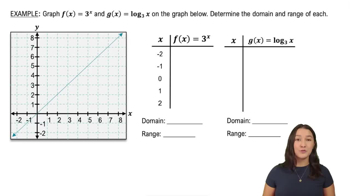Table of contents
- 0. Functions7h 52m
- Introduction to Functions16m
- Piecewise Functions10m
- Properties of Functions9m
- Common Functions1h 8m
- Transformations5m
- Combining Functions27m
- Exponent rules32m
- Exponential Functions28m
- Logarithmic Functions24m
- Properties of Logarithms34m
- Exponential & Logarithmic Equations35m
- Introduction to Trigonometric Functions38m
- Graphs of Trigonometric Functions44m
- Trigonometric Identities47m
- Inverse Trigonometric Functions48m
- 1. Limits and Continuity2h 2m
- 2. Intro to Derivatives1h 33m
- 3. Techniques of Differentiation3h 18m
- 4. Applications of Derivatives2h 38m
- 5. Graphical Applications of Derivatives6h 2m
- 6. Derivatives of Inverse, Exponential, & Logarithmic Functions2h 37m
- 7. Antiderivatives & Indefinite Integrals1h 26m
0. Functions
Common Functions
Problem 31a
Textbook Question
{Use of Tech} Launching a rocket A small rocket is launched vertically upward from the edge of a cliff 80 ft above the ground at a speed of 96 ft/s. Its height (in feet) above the ground is given by h(t)=−16t2+96t+80, where t represents time measured in seconds.
a. Assuming the rocket is launched at t=0, what is an appropriate domain for h?
 Verified step by step guidance
Verified step by step guidance1
Identify the function given for the height of the rocket: \( h(t) = -16t^2 + 96t + 80 \). This is a quadratic function representing the height of the rocket over time.
Determine the physical constraints of the problem. Since the rocket is launched from a height of 80 feet, the height \( h(t) \) must be greater than or equal to 0 for the domain to be physically meaningful.
Find the time when the rocket hits the ground by setting \( h(t) = 0 \) and solving the quadratic equation \( -16t^2 + 96t + 80 = 0 \). Use the quadratic formula \( t = \frac{-b \pm \sqrt{b^2 - 4ac}}{2a} \) where \( a = -16 \), \( b = 96 \), and \( c = 80 \).
Calculate the discriminant \( b^2 - 4ac \) to ensure it is non-negative, which confirms that the quadratic equation has real solutions. This will give the times when the rocket is at ground level.
The appropriate domain for \( h(t) \) is from \( t = 0 \) to the larger of the two solutions from the quadratic equation, as this represents the time from launch until the rocket returns to the ground.
Recommended similar problem, with video answer:
 Verified Solution
Verified SolutionThis video solution was recommended by our tutors as helpful for the problem above
Was this helpful?

 5:57m
5:57mWatch next
Master Graphs of Common Functions with a bite sized video explanation from Nick
Start learningRelated Videos
Related Practice



